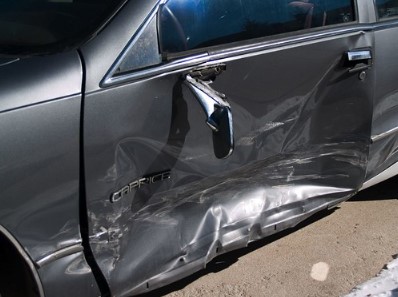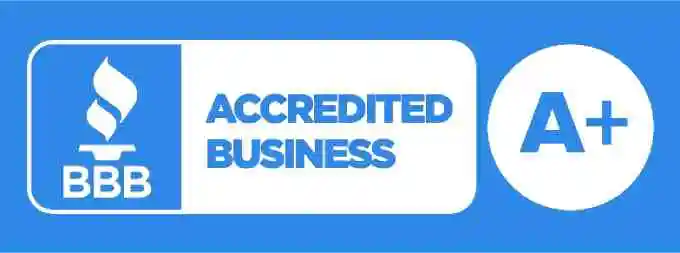Being involved in a car accident is never good, but some types of collisions can be worse than others. With certain types of car accidents, such as side-impact or T-bone collisions, it can be difficult to determine who’s at fault, which makes the ordeal even more stressful. If you’ve been involved in a T-bone side-collision accident, you may be wondering who’s at fault. Let’s explore what a T-bone collision is, who might be to blame in this type of accident, and other factors to consider if you’ve been involved in a side collision.
What Is a T-Bone Side Collision Accident?

A T-bone side collision accident is when one car runs into another at a perpendicular angle. In other words, the two cars come together to form a “T” shape. This can be a scary event, as the only things separating the impacted car from the other vehicle are thin doors and a couple of windows. The other car has the entire hood and engine separating the driver and passengers from the vehicle they hit, which can still be intense, but it’s not quite as much because there’s more to absorb the impact.
Other types of accidents that happen include head-on collisions and rear-end collisions. Both types of accidents are more common than side collisions, but no matter what type of collision you’re involved in, it’s essential to determine who’s at fault to make an insurance claim.
Who Is at Fault in a T-Bone Side Collision Accident?
It’s not always clear who the at-fault party is in a car accident. This is especially true for T-bone accidents because they can happen for a variety of reasons. It may seem like the driver who hits the side of another car is at fault, but this isn’t always the case. Sometimes, the driver who gets hit might be at fault if they were being inattentive. In other situations, there could be a third driver who wasn’t involved in the accident who is at fault. In some cases, a car’s manufacturer could be to blame for the T-bone collision, for example, in cases of faulty parts.
When the police arrive at the scene of the accident, they may or may not determine who the at-fault driver was. If the police officer doesn’t have all the information about the accident, they could misjudge who the at-fault party is. There are some instances where more than one party is to blame, which can complicate matters even more. To determine who’s at fault in a T-bone accident, you’ll need to gather evidence from the scene of the crash by taking pictures and measuring skid marks, as well as getting statements from witnesses who saw the accident occur.
Why Do T-Bone Side Collision Accidents Happen?
Car accidents can happen for a variety of reasons, including:
- Being inattentive behind the wheel.
- Being intoxicated while driving.
- Driving above the posted speed limit.
These are the main causes of most car accidents on the road. But T-bone side collision accidents can happen for a few other reasons, such as:
- Running a red light.
- Running a stop sign.
- Misjudging the opening in traffic.
Sometimes, it’s manufacturing errors that lead to T-bone collisions happening. For example, if a car has faulty brakes, it could mean a driver isn’t able to slow down at a stop sign or stoplight and collides with another vehicle. If a driver has a poor line of sight, they may not be able to clearly see oncoming traffic and drive through an intersection they thought was clear but actually wasn’t.
What Damage Is Caused in a T-Bone Side Collision Accident?
Although all car accidents typically result in some sort of damage to a vehicle, the damage caused by a T-bone collision can be extensive. This is because the impact is usually forceful, caving in the door and potentially damaging the frame of the car that’s been hit from the side. Also, windows typically get broken in these types of accidents.
Unfortunately, the driver and passengers are at higher risk of being injured in a side collision, too. This is because there’s not much to protect them from the oncoming vehicle. If the windows shatter, glass can fly into the car and cut those who are inside. The door may crumple and push passengers to the other side of the car or even eject them from the vehicle entirely. If the door does crumple, it could make the roof collapse, leading to an increased risk of head injuries.
What Should You Do After a T-Bone Side Collision Accident?
If you’re involved in a T-bone side collision accident, you should immediately seek medical attention after talking to the police and making a report of what happened. The next thing you need to do is make a claim to your insurance provider. They’ll need your name, policy number, date the accident occurred, and information about what happened. You’ll want to make your claim as soon as you can after the accident, as the insurance company will need to verify the information you provide them before being able to offer you a settlement.
Depending on who’s at fault, you may also need to speak with the other driver’s insurance company. They’ll also want your personal information and a statement of what happened. If your car was the one impacted from the side, it’s likely to be totaled out, especially if there’s damage to the vehicle’s frame. This means you’ll need to start shopping for a new car once you’ve reached an agreement on the settlement with your insurance company.
Hopefully, you’re never involved in a T-bone collision. However, if you are, it’s good to have the right insurance coverage to ensure you’re fully compensated for damages to you and your property. If you’re in the market for an excellent insurance provider, look no further than American Auto Insurance. Call us today at 773-286-3500 to get a quote so you can get the coverage you need and want to protect yourself in case something like an unfortunate T-bone accident happens to you.


